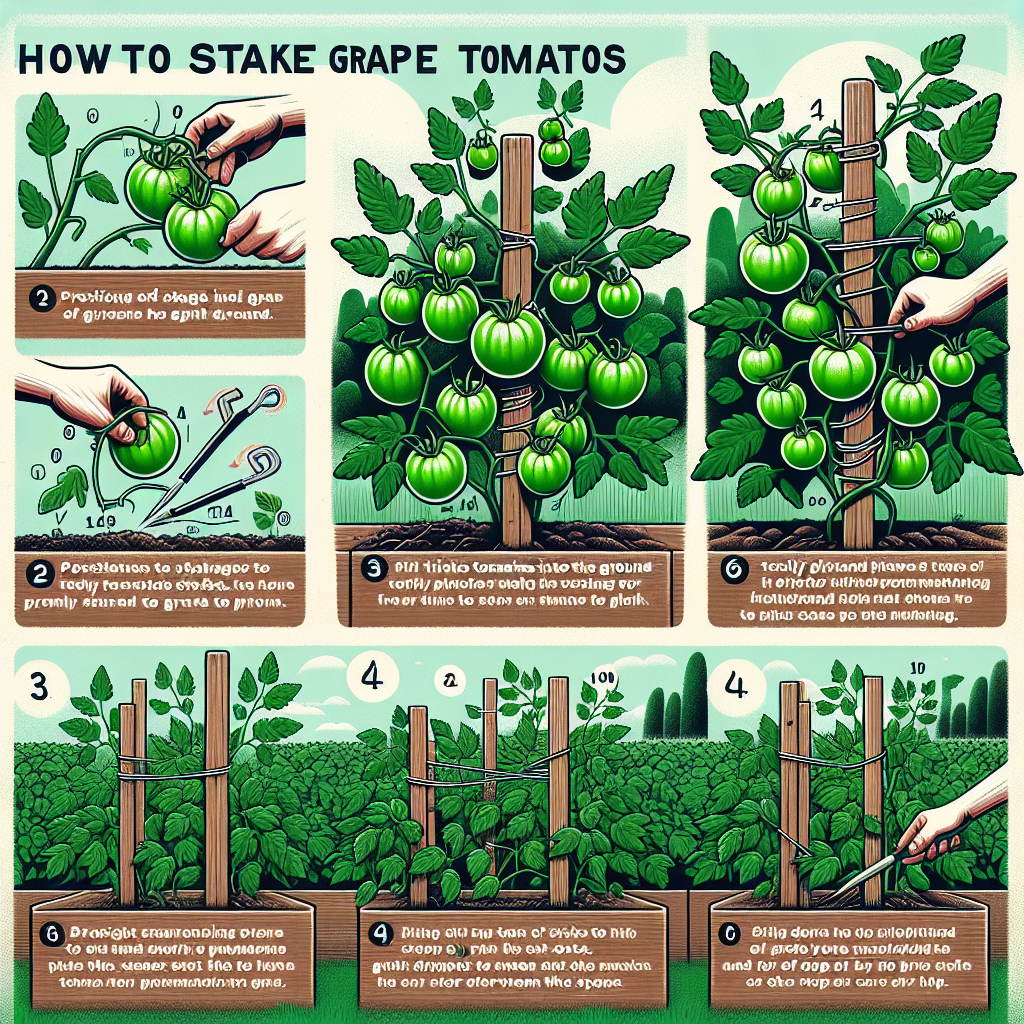
How to stake grape tomatoes
How to Stake Grape Tomatoes: A Comprehensive Guide
Grape tomatoes are a popular choice among home gardeners due to their sweet flavor, small size, and versatility in the kitchen. However, to ensure that these vibrant fruits thrive and produce abundantly, proper support is essential. Staking helps keep the plants upright, promotes airflow, and reduces the risk of diseases. In this article, we will explore everything you need to know about how to stake grape tomatoes, including the right materials, techniques, and tips for success.
Understanding Grape Tomatoes
Before delving into the staking process, it’s crucial to understand grape tomatoes and their growing needs. Grape tomatoes belong to the Solanum lycopersicum family, which also includes other types of tomatoes. These small, elongated fruits are typically sweeter than other varieties, making them perfect for salads, snacks, and sauces. Here are a few key characteristics of grape tomatoes:
- Size: Grape tomatoes are usually 1-2 inches long.
- Texture: They have a smooth skin and a juicy interior.
- Flavor: Known for being sweet and slightly tangy.
- Varieties: Different cultivars offer various colors and flavors.
Why Staking is Important
Staking your grape tomatoes is not just an aesthetic choice; it's an essential gardening practice that provides numerous benefits:
- Prevents Damage: Elevated plant structure minimizes the risk of splitting and bruising from contact with soil and pests.
- Improves Air Circulation: Improved airflow around the plants helps reduce humidity, which can lead to fungal diseases.
- Enables Better Sunlight Exposure: Staked plants receive more sunlight, enhancing fruit ripening and overall growth.
- Simplifies Harvesting: Easier access to the fruits makes the harvesting process more efficient.
Materials Needed for Staking Grape Tomatoes
Choosing the right materials is crucial for effectively supporting your grape tomato plants. Here’s a list of common materials you can use:
- Stakes: Wooden, metal, or plastic stakes, typically 5-7 feet long.
- Cages: Wire cages provide a circular support system for the plants.
- Twine: Garden twine or soft rope to secure the plants to the stakes.
- Clips or Ties: Special tomato clips or Velcro ties to fasten plants without causing damage.
With these materials in hand, you’re ready to start staking your grape tomatoes!
The Staking Process
Step 1: Choosing the Right Stakes
When selecting stakes for your grape tomatoes, consider the following:
- Height: Ensure your stakes are tall enough to support the plants as they grow, typically around 5-7 feet.
- Material: Choose durable materials, such as treated wood or metal, that withstand outdoor conditions.
- Stability: Ensure your stakes are sturdy enough to support the weight of the plant and fruit.
Step 2: Timing the Installation
Installing stakes should be done early in the growing season, ideally shortly after planting. This prevents damage to the roots and allows for initial training of the plants as they grow.
Step 3: Installing the Stakes
Follow these steps to install the stakes properly:
- Place stakes in the soil at least 12-18 inches away from the base of the plants.
- Drive the stakes into the ground about 12-18 inches deep for stability.
- Ensure the stakes are vertical, using a level if necessary.
Step 4: Securing the Plants
Once the stakes are installed, it’s time to secure your grape tomatoes:
- Begin tying the stems to the stakes as the plants grow.
- Use soft twine or clips to gently fasten the stems, making sure not to damage them.
- As the plants grow taller, continue securing them at regular intervals (every 12-18 inches).
Additional Staking Techniques
Using Cages
If you prefer an alternative to stakes, using wire cages can be a simple and effective method:
- Choose cages that are at least 4-5 feet tall.
- Place cages around the plants at the time of planting or early in the season.
- Prune any excess growth that gets unruly to keep plants supported within the cage.
Multiple Staking Methods
Some gardeners find success using multiple staking methods for enhanced support:
- Florida Weave: A method involving horizontal strings around multiple plants secured to stakes.
- Trellis System: An upright structure where plants can cling as they grow.
Maintenance and Care for Staked Grape Tomatoes
After staking your grape tomato plants, regular maintenance is key to a thriving garden:
- Watering: Keep soil consistently moistened, especially during dry periods.
- Fertilizing: Use a balanced fertilizer to promote healthy growth.
- Pruning: Regularly trim any suckers or dead leaves for optimal growth.
Common Problems and Solutions
Pest and Disease Control
Staked grape tomatoes are less prone to disease due to improved airflow, but they can still face challenges:
- Aphids: Treat infestations with insecticidal soap.
- Blight: Remove affected leaves and improve air circulation.
- Spider Mites: Wash plants with water or use neem oil.
Managing Growth
As the plants grow, they may require additional support:
- Adjust ties or supports as necessary.
- Reinforce stakes if they become loose.
Harvesting Grape Tomatoes
Once your plants are well-staked and thriving, it’s time to enjoy the fruits of your labor:
- Harvest when the tomatoes are vibrant in color and slightly firm.
- Use scissors or garden shears to cut the tomatoes from the vine.
- Handle the fruits gently to prevent bruising.
Conclusion
Properly staking your grape tomatoes is vital for ensuring a bountiful harvest. By following the steps outlined above and understanding the needs of these plants, you can successfully grow and enjoy delicious, sweet grape tomatoes throughout the growing season. With careful attention to support, maintenance, and care, you’ll not only maximize your yield but also enhance the overall quality of your harvest. Remember, the journey of how to stake grape tomatoes is not just about preventing physical damage; it’s about nurturing a thriving garden that brings joy and flavor to your table.
By Guest, Published on August 9th, 2024